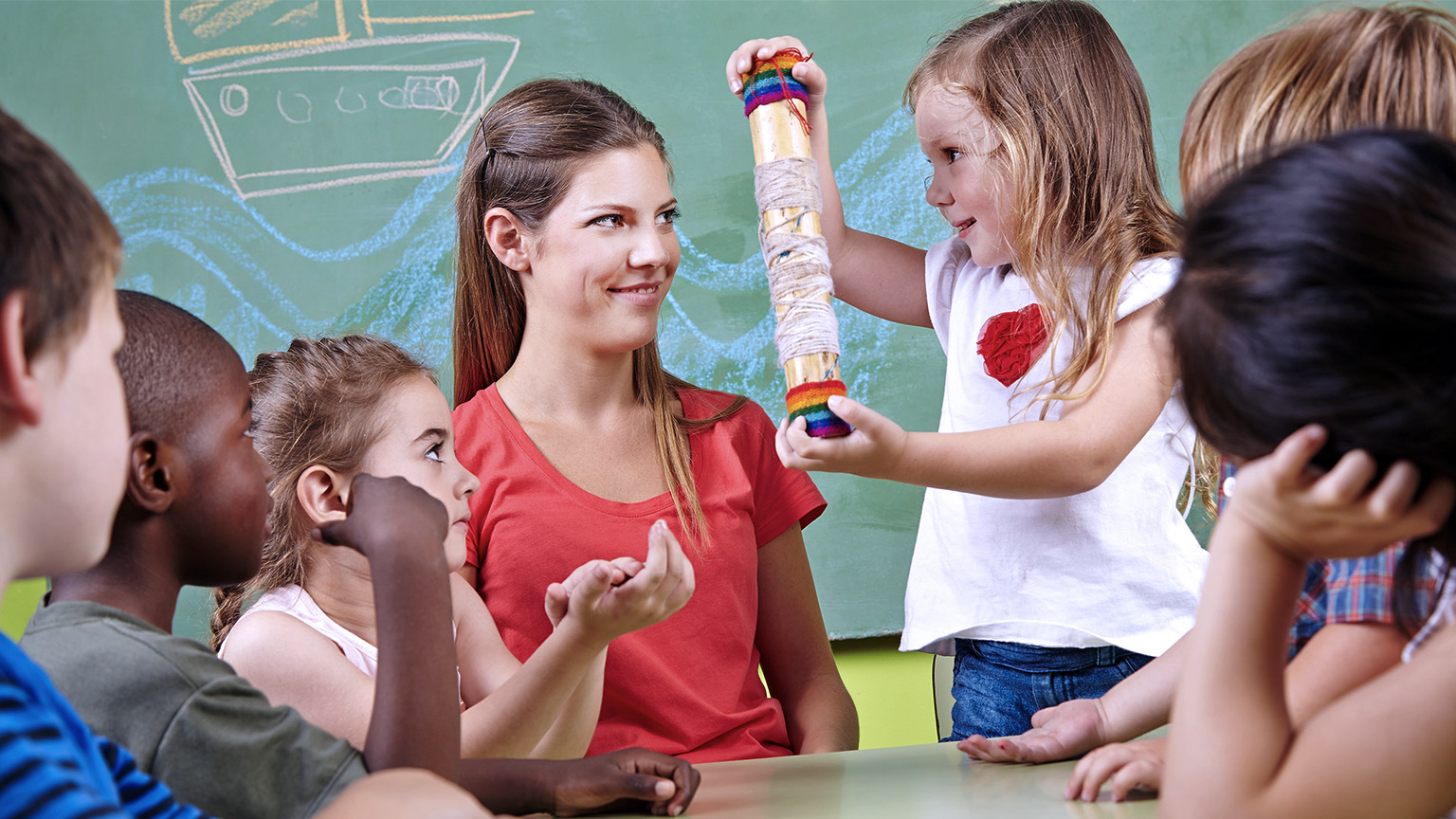Early childhood practices and frameworks stem from a background in founding and influencing theories and studies and research that support educators' understanding of how children develop and learn. Educators must understand why and how to implement supports for children to aid their growth and early development.
By the end of this topic, you will understand:
- Early childhood theories on development, growth, and learning
- How to research quality contemporary and historical research, studies, and theories
- How to reflect on how this information impacts your professional philosophies and pedagogical practices
- Assess the relevance of the information for the service needs and community context
- How to critically reflect and evaluate relevant concepts
Theoretical perspectives, together with our personal and service philosophy, affect the way we approach our work with children, families and community. Anne Kennedy 1
Professionals theorise about human development, behaviour, and learning. As we learn more about the human mind and body, we understand how children learn, develop, and grow.
Research helps us to understand why many children develop and grow in typically similar ways around the world, but they may have grown up with entirely different experiences and opportunities
In early childhood, educators essentially study children daily, researching how they develop in line with their understanding of the impacts on development by their ecological systems and social-cultural worlds. They ask research questions such as ‘What is the experience of a three-year-old who has opportunities for messy play, outdoor connections to their world and nurturing relationships with educators?’ to understand how to support them to meet their full potential.
Most educators will find that a specific theory makes more sense or connects to their ideas and beliefs of how we develop and learn. However, this may change over time with varying experiences and education.
As educators, we use these theoretical insights as a guideline to create professional decisions about:
- How we understand and interpret children, their behaviour, learning and development
- How to support their behaviour, learning and development
- How and why children differ and demonstrate their unique development, behaviour, and learning
- Social and cultural contexts in childhood and throughout their lifespan
- How to create the most suitable environments for children
- Concepts for critical reflection and pedagogical decision making.
Case Study
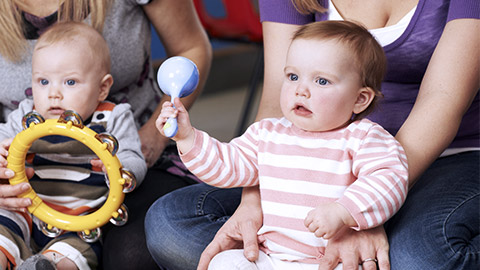
Lilly is eight months old and has just started at Little Early Learning Centre. Lilly cries and wants to be held for the first 2 hours she is at the service. Lilly has never been away from her family before. Whilst this can be tiring and challenging for the educators within the room, they are aware that Lilly is going through the trust versus mistrust phase of Erik Erikson's Psychosocial theory, which requires a child to be responded to develop trust in others. The educators always ensure they are responding and comforting Lilly, knowing she will slowly build trust and settle into the service.
Keep your knowledge up to date by participating in opportunities to update and enhance your knowledge like placement, talking to other educators and completing ongoing professional development.
Also, use the internet to research information from credible sources. Credible sources are published by people with the qualifications, skills and experience required to teach others about early childhood.
Further Reading
Some credible external websites and resources are included below:
- Aussie Childcare Network
- ACECQA – Developmental milestones
- Health Direct – Developmental milestones in babies and children
Instructions to use the internet and digital media to conduct research are usually available from your employer. Some centres restrict access to some sites, and your policies and procedures may dictate how you collect information from third parties.
Follow the steps if instructions are unavailable:
- Search for childhood learning, development, and wellbeing
- Restrict your search to Australian publishers
- Use your work signature block if requesting information via email
- Make sure your language is professional if communicating with a real person.
Approaches in child development
There is a range of theories and perspectives on child development that educators can use to inform their practice. Studies and research have occurred to understand child development and explain how children mature and grow. Child development theory explains behaviour and why children behave in specific ways. Theories of child development have continued to evolve. Many child development views arose from views of nature v’s nurture. Early behaviouralist theories (including John Locke, John Watson and B.F. Skinner) saw children develop due to external (or environmental) forces to elicit conditioned responses due to a schedule or either reward or punishment. Therefore, behaviours arose from nurture by adults to shape the child’s responses (behaviours). Whilst others believed in nature as the shaping force, where children were intrinsically motivated, learning occurred by a mostly internal process towards development and maturation.
The early theories lead to five broad categories of child development.
| Theory | Description |
| Developmental theory | Based on the developmental psychology of achieving milestones as a child matures and grows |
| Socio-cultural theory | Explains children's development in relation to their community and that community’s belief systems |
| Socio-behavioural theory | Views a child's development as creating knowledge and gathering experiences when interacting with others |
| Critical theories | Suggest that the educator thinks critically and challenges practices and assumptions about the learning program |
| Post-structuralist theory | Promotes many ways a child can learn and develop and many perspectives an educator can use to plan work. It sees a balance between many factors, such as the child’s stage of development, their interests and motivation, and the support of caring and committed adults in a well-designed program |
Educators can use elements of different current and emerging theories and research about developing children’s cooperative behaviour to build their practice. Aspects can be selected and used depending on the support they are trying to provide or the problem they are trying to resolve. When supporting behaviour development in children towards encouraging and building cooperative behaviours, educators can use aspects of the socio-behaviouralist theories, which emphasise using experiences to shape the child’s behaviour. Cooperative behaviour includes children working with others, being helpful and showing empathy and care for others. It involves building self-regulation and supporting children to use certain behaviours over others because they will result in better quality relationships and the development of self-discipline. There is a recognition of the child's developmental stage and selecting techniques that meet their needs at their stage. Building cooperative behaviour is a process of encouraging the child to have agency over their behaviour and to provide a positive environment where they can recognise appropriate behaviour and be reinforced for using it.
We will learn about some of the learning theorists and research findings used in education today.
Theorist Arnold Gesell (1880-1961)
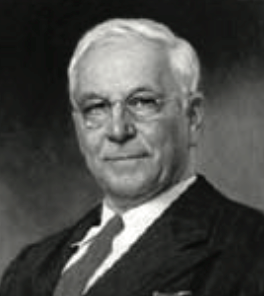
Theory: Maturation developmental theory
Summary
Arnold Gesell observed children from birth to adolescence. He identified what we now know as the early developmental milestones, establishing norms for each age according to the developmental domains of motor, adaptive, language and personal social behaviours. He further identified that development occurred in a cycle, with specific equilibrium points (settled, calm, compliant, confident) and disequilibrium (explosive, fearful and self-involved). Gesell stressed throughout the implementation of these milestones that children do, however, have individual trajectories and variables, growing and developing at their own pace and encouraged participants to use the milestones as a guideline.
Stages of maturation include:
- Prenatal: changes that occur in the womb
- Postnatal: changes that occur in infancy and childhood
- Adolescence: changes that occur during teenage years and into adulthood
- Adulthood: changes that continue over the rest of your life.
Application
This theory is still utilised today by many professionals working with children as a guideline for their growth and development. Many professionals working with children use milestones as a basis for checklists and observation interpretations.
Educators should observe children for typical predicted development milestones and if there are any developmental concerns.
It also shows us how to support the curriculum decisions of a service, such as planning and environmental provisions.
Theorist Erik Erikson (1902-1944)
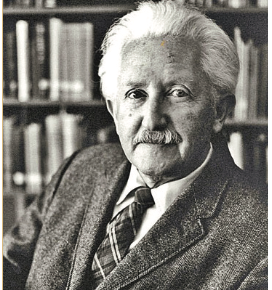
Theory: Psychosocial theory
Summary
It's no secret that childhood is a critical stage in a person's development, and each stage comes with its own set of challenges and opportunities for growth. Luckily, renowned psychoanalyst Erik Erikson identified eight stages of psychosocial development in the early years.
Erikson believed each stage had two opposing paths: one leading to a positive outcome and the other leading to an unhealthy result. He proposed that these pathways determine how children interact with their environment and deal with their challenges at each developmental milestone. For example, during infancy, children must develop trust or mistrust in their caregivers; if trust is established, this will lead them down the path of security and autonomy, whereas mistrust can lead to feelings of insecurity and doubt.&
The table shows developmental stages and social and personal attributes created by the environment.
| Stage | Conflict | Task/ Events |
| Infancy | Trust vs mistrust | Feeding, nurturing and comfort |
| Early childhood | Autonomy vs shame and doubt | Self-help skills and independence; toileting, dressing |
| Preschool | Initiative vs guilt | Exploration, play and learning |
| School-age | Industry vs inferiority | School and school-age activities |
| Adolescence | Identity vs role confusion | Identity of self in the context of their world/social relationships |
| Young adult | Intimacy vs isolation | Intimate relationships |
| Middle adulthood | Generativity vs stagnation | Work-life and parenthood |
| Maturity | Ego identity vs despair | Reflecting on a life lived |
Application
Apply this theory by supporting children to develop self-help skills and independence, toileting, and dressing to avoid conflict during the early years.
Theorist Albert Bandura (1925 - 2021)
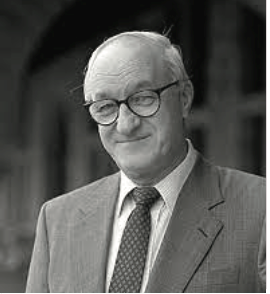
Theory: Social learning theory
Summary
Bandura’s theory is one of the most influential and widely recognised theories in all psychology. Developed by Albert Bandura in the 1970s, it has continued to shape our understanding of how we learn and think about ourselves.
Social learning theory is especially relevant during early childhood. Children constantly observe and learn from their peers and parents, acquiring complex language, problem-solving, and socialisation skills. It also emphasises self-regulation: children learn when they can adjust their behaviour based on feedback from others or the consequences they experience due to their actions. This helps them develop socially acceptable behaviours that will help them succeed.
Application
Apply Bandura’s theory by acting as a positive role model and showing children healthy ways to respond to their environment.
Theorist Jean Piaget (1896 - 1980)
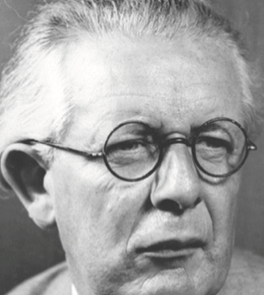
Theory: Cognitive theory
Summary
Piaget’s theory of cognitive development is a cornerstone in our understanding of early childhood. Swiss psychologist Jean Piaget proposed that children learn through their interactions with the environment and that this learning unfolds in stages. His ideas about how kids develop cognitively were ground-breaking as they provided insight into how children acquire knowledge and form new skills.
The four general stages of Piaget's theory are Sensorimotor (birth-2 years), Preoperational (2-7 years), Concrete Operational (7-11 years) and Formal Operational (11+). During the sensorimotor stage, infants use their senses to explore the world around them by tasting, touching, hearing, seeing and manipulating objects with their hands.
The preoperational stage is perhaps one of the most critical in understanding how young children's brains work. This stage sees children become able to recognise symbols and use language, but it also includes an inability to understand abstract concepts or deduce reality from fantasy.
Application
Allow children to learn by doing and exploring and provide experiences that are interesting and suited to their stage of development.
Theorist Lev Vygotsky (1896-1934)
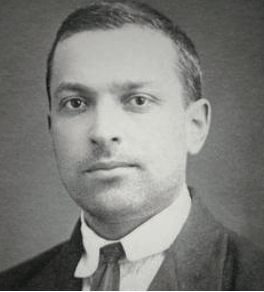
Theory: Cognitive theory
Summary
Vygotsky's theory is an important concept to understand in early childhood. Developed by the Russian psychologist Lev Vygotsky in the 1920s and 30s, this theory suggests that children learn best through social interaction and collaboration with adults or peers who are more knowledgeable.
This teaching method, often called scaffolding, involves breaking down tasks into small chunks so each step can be mastered one at a time. It also includes assisting young learners as they work on their own towards mastering a task. This assistance could come from parents, teachers or even older peers who are more advanced in understanding the skill being taught.
Vygotsky's theory has been used for decades and still stands true today - children learn best through social interactions with those around them who can provide guidance and support.
Theorist Jerome Bruner (1915-2016)
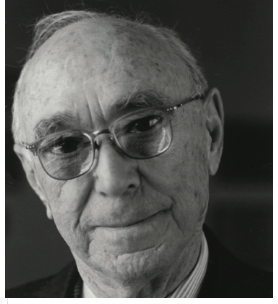
Theory: Cognitive theory
Summary
Bruner proposed that children learn best through discovery and exploration, allowing them to make sense of the world on their terms. Developed by cognitive psychologist Jerome Bruner in the 1960s, this approach seeks to foster a child’s natural curiosity and creativity, with educators taking a step back from the traditional teacher-centric model.
At its core, Bruner's theory focuses on how children learn and seek new knowledge. It emphasises hands-on activities and problem-solving as critical parts of learning in early childhood. The idea is that children should be encouraged to observe their environment critically, come up with questions and hypotheses about what they see or experience, and then actively test these ideas until they reach a conclusion.
Theorist Lawrence Kohlberg (1927-1987)
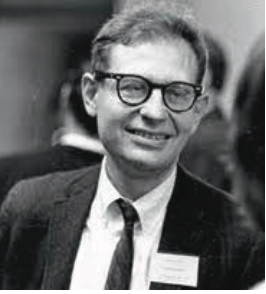
Theory: Moral development
Summary
Kohlberg explained how early childhood experiences could shape a person's moral development.
Kohlberg's theory consists of three levels of morality, each with two stages. During the first level (pre-conventional morality), children tend to make decisions based on personal gain or fear of punishment. In the second level (conventional morality), children consider society and its rules when making decisions. Finally, during the third level (post-conventional morality), individuals start to think more abstractly and base their decisions on universal principles and values rather than social norms or conventions.
In early childhood, most children make decisions based on personal gain or fear of punishment. Educators must acknowledge this as a normal stage of development, as opposed to a flaw in character.
Theorist Abraham Maslow (1908-1970)
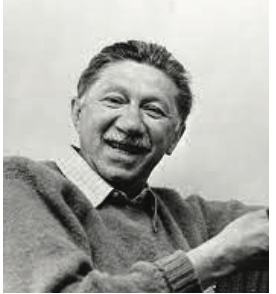
Theory: Motivational psychological health theory: Hierarchy of needs
Summary
Maslow suggested that human needs are arranged in a hierarchical order and must be satisfied, beginning with the most basic physiological needs and culminating with self-actualization. This theory provides us with valuable insight into early childhood development.
When discussing early childhood, Maslow's hierarchy of needs can help explain why some children struggle more than others. Children in their first few years of life rely heavily on their caregivers to meet their basic survival needs, such as food and shelter, before they can focus on higher-level goals like developing relationships or achieving success academically. Without those essential building blocks being met, a child may not have the foundation for growth and learning later in life.
Theory: Theory of mind
Summary
Theory of mind is essential for educators to understand, especially regarding early childhood development. Theory of mind is the ability of a person to understand and interpret the thoughts, intentions, beliefs, and emotions of others. It allows people to recognise that others have different perspectives from their own - an essential skill in our ever-changing world.
For young children, the theory of mind develops around age three or four as they start recognising other people's feelings and opinions.
Theorist Howard Gardner (1943 - )
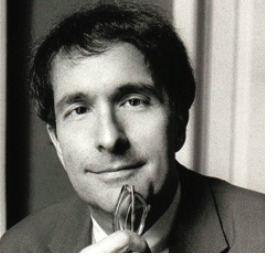
Theory: Multiple intelligence theory
Summary
Gardner's theory is an important concept in early childhood education. It states that people have the potential to develop multiple intelligences and not just one type of intelligence as was traditionally thought. This theory proposes that humans can have eight distinct types of intelligence: linguistic, logical-mathematical, musical, spatial, bodily-kinaesthetic, interpersonal, intrapersonal and naturalistic.
Children can benefit from learning activities that use all types of intelligence.
For example, when teaching a pre-schooler how to count objects in a room, they can practise:
- their linguistic intelligence by speaking the numbers aloud
- their logical-mathematical skills by counting up the items
- their spatial awareness by visualising how many items there are.
- their bodily-kinaesthetic skills through hand motions or gestures while counting out loud.
Theorist Urie Bronfenbrenner (1917 - 2005 )
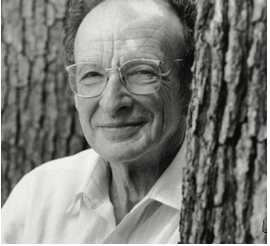
Theory: Ecological theory
Summary
The Bronfenbrenner theory is a vital tool for understanding the development of children in early childhood. It helps us understand how their environment affects them and their capacity to learn and grow.
The five systems of the Bronfenbrenner theory provide a comprehensive framework for understanding how environmental factors shape development from infancy through adulthood. It begins with the microsystem, which includes immediate family, peers, school, and day-care. The mesosystem looks at how different parts of a child's life interact with each other; for example, how home relationships affect school performance or vice versa. The ecosystem refers to outside influences like parents’ working environments or cultural practices. Finally, the macrosystem looks at large-scale social forces such as socioeconomic status or biases experienced by certain groups that can affect a child's growth and well-being.
Theorist Rudolph Dreikurs (1897 - 1972)
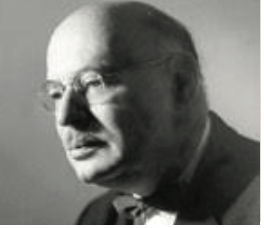
Theory: Mistaken behaviours theory
Summary
This theory is based on the idea that all misbehaviour is an attempt to get attention, power, revenge or acceptance.
Dreikurs identified four mistaken goals of behaviour, including:
- Attention-getting (where children seek out positive or negative attention)
- Power (where they want to control their environment and be taken seriously)
- Revenge (where they react out of anger and hurt pride)
- Acceptance (where they want to fit in).
By understanding these mistaken goals, educators can help children adjust to situations without resorting to misbehaviour.
John Bowlby (1907-1990)

Theory: Attachment Theory
Summary
Attachment theory is critical to understand because it explains how the bond between a child and their primary caregiver develops in the first few years of life and why this bond is vital for healthy growth and development.
Developed by John Bowlby in the 1950s, attachment theory suggests that babies are born with an innate need to form strong emotional connections with one or more caregivers—usually a parent or guardian—to feel loved, secure, and safe. This connection gives them a sense of security which helps them explore their environment without fear of abandonment. Research has shown that when a child's needs for security and attachment are met through responsive parenting (and educating), they're better able to learn new skills, form trusting relationships with others, and develop feelings of self-worth.
Learn More
Read the article Gene – Environment Interaction by Centre on the Developing Child, Harvard University, to learn more about genes, environment and their influence on development.
Watch
Learn about Maslow’s Hierarchy of needs by watching YouTube. Pay close attention to the level of ‘Belonging’.
Maslow’s Hierarchy of Needs in the Workplace
Watch YouTube to learn about Vygotsky's (and also Piaget’s) theories
Vygotsky's Theory of Cognitive Development in Social Relationships
Watch the YouTube clip to learn about psychosocial development
8 Stages of development by Erik Erikson
Watch the reworked psychosocial developed with a little help from movies we know and love.
Erikson’s 8 stages of development theory
Practice
Kohlberg
Review Kohlberg’s stages of moral development, which include three levels of moral development and six stages, and read the case study.
| Level | Age | Stage | Descriptor | Thinking |
|---|---|---|---|---|
| Preconventional | Infancy | Punishment and obedience |
|
"will I get in trouble" |
| Preschool | Individualism, purpose, and exchange |
|
"Why should I?" "If I do this, I will get a lolly" |
|
| Conventional | School | Mutual interpersonal expectations, relationships, and interpersonal conformity |
|
"Everyone else is doing this and the rules say I should". |
| Social system and conscience |
|
"I feel like I should do this because..." | ||
| Post-conventional | Adolescence to adulthood | Social contract, or utility, and individual rights |
|
“John feels differently to myself, however the law says this, and I should conform because it is the right thing to do” |
| Adulthood | Universal ethical principles |
|
“This rule conflicts with the rights for freedom, I don’t believe this should be the case” |
Johnny takes his bike into the bike shed at school. He puts a lock on his bike because that is the rule if you want to ride your bike to school and leave it in the shed. His friend Hamish walks in with his bike and does not lock the bike. Johnny exhales deeply and dramatically states, “Hamish, you have to lock it, or you cannot leave it here!” “But I didn’t bring my lock,” he responds. “Sorry, you are not allowed, then that’s the rule.”
Answer the following questions:
- Which moral development stage is Johnny displaying?
- If Johnny was conflicted and informed Hamish that it did not seem right for him not to be able to leave it only because he forgot the lock, what stage would this be?
Ensure that you keep notes for future reference, as this information will support your assessment and professional practice.
Practice
Multiple Intelligences
You may want to learn your preference by taking a multiple intelligence quiz. We often find that the results change over time, so if you have taken one in the past, you may wish to try it again and see if you have changed.
Take the multiple intelligence quiz to identify which intelligence type you have by Science of People: https://www.scienceofpeople.com/whats-intelligence-type/
Practice
Ecological Systems Theory
Review and consider the 2007 adapted model to Bronfenbrenner’s ecological systems theory. For each system, e.g., microsystem and ecosystem. Write a personal reflection on how you believe these systems could individually influence a child and how this could support educators to understand a child’s needs to feel like they belong.
Ensure that you keep notes for future reference, as this information will support your assessment and professional practice.
- Microsystem: the person has direct involvement in their microsystems and is the closest system to them including school, childcare, family, neighbourhood, parenting factors and communities.
- Mesosystem: This is the connection of the systems. For example, the child’s parent and teacher meeting to have a discussion.
- Exosystem: this is the link between the two settings, a setting where the parent is directly involved but not the child, such as the mother’s workplace, yet will ultimately have influence on the child.
- Macrosystem: these are the cultural contexts of the person, such as government and politics, ideologies, society, economics and the country including nationality.
- Chronosystem: the timeline for which life events or sociohistorical events (or conditions) occur, such as the impact of divorce in the household (including what age a child is when this occurs), war or the development of various human rights. For example, what ould life have been like (and the impacts) for a female in the 1900s compared to 2000 and how would this impact them.
The Australian Early Development Census (AEDC) measures and monitors data every three years towards Australia’s national progress to improve Australian children’s development.
The AEDC provides evidence to support the critical work of the early childhood education sector in delivering the best development opportunities and outcomes for children. The AEDC shows trends for individual domains and can support educators in thinking about different projects required at the workplace. For example, where physical health and well-being are low in the region they work, they might like to introduce more physically active experiences.
Findings from the 2018-2019 data collection include:
- The 2018 AEDC data show a significant decrease in the level of vulnerability on one or more domain(s) from 22 per cent (in 2012 and 2015) to 21.7 per cent.
- Significant gains have been made in children’s communication skills and general knowledge, with 8.2 per cent of children developmentally vulnerable in this domain in 2018. This is a decrease from 8.5 per cent in 2015 and 9.0 per cent in 2012. The percentage of children on track in this domain has increased from 76.3 per cent in 2015 to 77.3 per cent in 2018, corresponding to approximately 3,000 more students across the country who are on track in these skills when they start school.
- The level of vulnerability in the emotional maturity domain in 2018 remained the same as in 2015 at 8.4 per cent. However, this still remains higher than in 2012 (7.6 per cent).
- The domains of physical health, well-being, and social competence have fluctuated over the years. Both domains have remained relatively stable over the 2015 and 2018 data collections. The physical health and wellbeing domain decreased from 9.7 per cent in 2015 to 9.6 per cent in 2018. However, this still remains higher than 9.3 per cent in 2012. The percentage of children on track in the physical health and wellbeing domain has increased from 77.3 per cent in 2015 to 78.1 per cent in 2018. The social competence domain saw a decrease in vulnerability from 9.9 per cent in 2015 to 9.8 per cent in 2018. However, this remains higher than in 2012 (9.3 per cent). The percentage of children on track in the social competence domain has increased from 75.2 per cent in 2015 to 75.8 per cent in 2018.
- The level of vulnerability in the language and cognitive skills (school-based) domain has remained relatively stable over 2018 (6.6 per cent) and 2015 (6.5 per cent). However, this is still lower than 8.9 per cent in 2009.
There are several ways in which early childhood educators can work with and support communities to help shape the future and well-being of Australian children.
- Building community partnerships.
- Raise awareness of the importance of early childhood development.
- Share the importance of early childhood development with families.
- Convey the developmental focus of early childhood education.
- Develop initiatives to support children.

Educators need to understand the core principles of child development and how it is affected by the following:
- Cultural context
- Individual differences
- Maturation.
Cultural context
As an educator, you need to understand the community where your children and families live and know the factors, values and expectations that influence their households and communities. This information will help you provide meaningful, relevant, and respectful learning experiences for children and allow you to communicate better with family members.
Individual differences
By watching children interact and play together through physical activities and the physical environment, we can learn about their interests, abilities, and developmental progress. Knowing these differences will help us better teach and care for them to meet their needs.
The three principles of child development include the following:
- Development starts from the brain and moves down to the body.
- All development occurs in the same order, although the pace at which one area of development is realised can differ.
- All development areas are interconnected.
As educators, we must support individual and age groups' needs.
For example:
| 0-3-year-old children |
Educators must: Provide a safe environment |
| 4-7-year-old children |
Educators must: Provide a safe environment |
In summary, knowledge of the cultural context, individual needs and requirements of different age groups will help you to develop meaningful, relevant, and respectful learning experiences for each child.
Developmental domains
There are five domains of child development:
The physical domain in child development is a crucial area of growth and development, and it encompasses fine and gross motor movements, coordination, and eye movement.
Fine motor skills involve small, precise movements such as writing with a pencil or threading beads on a string. Gross motor skills are larger muscle movements like walking, running, skipping, and climbing. Coordination is the ability to move different body parts together smoothly to complete tasks or activities. Finally, eye movement is the ability to track an object with the eyes without moving the head or body.
These physical skills are essential for everyday functioning as children grow into adults; they help children become independent by developing their abilities to perform everyday tasks on their own.
The emotional domain of child development is essential in nurturing a healthy, well-rounded individual. This domain covers children's needs, feelings, and self-esteem, which should be met as they grow and develop. Attachment and trust are two key elements to understanding this domain; with these concepts in place, children can learn positive coping strategies that will help them throughout their lives.
Studies have shown that effective attachment between parents/caregivers during early childhood is essential for forming a secure base from which children can explore their environment safely. This bond also fosters trust in adults so that children can express themselves more openly and learn to cope with stressors such as fear or sadness. Positive self-esteem helps build resilience - which allows the child to better handle situations on their own - while also encouraging exploration of new experiences.
The social domain of child development is essential to a child's growth and understanding of the world. It encompasses learning how to share, show respect for others, be aware of diversity and practice positive communication skills. These skills are necessary for children to build meaningful relationships with their peers and adults in their lives.
Developing strong social skills is critical for success in school, work environments, relationships and throughout life. Children learn these behaviours through play, interactions with family members, attending school or day-care settings and observing those around them. By helping children develop age-appropriate social skills like sharing resources or taking turns speaking during conversations, they can learn to become tolerant citizens who foster healthy relationships with those around them.
The cognitive domain of child development is a crucial area of study for parents and educators alike. It involves developing all aspects of thinking, problem-solving, and questioning. This includes both mental processes, such as memory recall and decision-making, and more physical processes, such as hand-eye coordination. By understanding how the cognitive domain works in children, we can better equip them with the skills needed to become successful learners and independent thinkers.
Essentially, for children to be able to think logically and make sense of their environment, they must first acquire specific skills within the cognitive domain. These may include identifying patterns or relationships between objects, breaking down complex tasks into manageable steps, recognising cause-and-effect relationships, and using deductive reasoning to draw conclusions from the evidence presented in front of them.
The language domain is an important aspect of child development, and it refers to the expression, communication and understanding of language in terms of grammar and vocabulary. Developing language skills during early childhood is vital for success later in life, as it provides a foundation for learning and social interaction.
The ability to understand and use verbal language starts to develop from a very young age, with infants beginning to understand simple instructions before they can form sentences themselves. As children grow older, the complexity of their language increases significantly, allowing them to express thoughts more clearly and participate in conversations with others. Similarly, their vocabulary expands over time as new words are learnt and concepts become clearer. Alongside this comes improved grammar skills, allowing them to master sentence structure more effectively.
Understanding the predictable behaviours associated with different ages can be difficult, but it is easier when we look at the different age groups and domains used in child development. Checklists can be used to observe the easily predictable behaviours in a child and reviewed to assist in developing activities and learning goals.
Research shows several relationships between the different areas of development in children from birth to 5 years old, including physical, cognitive, social-emotional, and language development.
Physical development involves growing stronger, gaining coordination and balance, increasing independence in movement and play activities, and understanding safety needs. This growth area is closely intertwined with cognitive progress – as babies develop physically, they gain knowledge about their environment that helps them learn how to interact with objects or people. Additionally, physical activities help to shape neural pathways that support children’s thinking skills.
Age and stage of development
Children learn through experience, practice and trial and error. Their capacity and needs change depending on their age and their developmental stage.
Image sources from the University of Wisconsin – Act Early: https://actearly.wisc.edu/materials/
Examples of developmental milestones that can be predicted for children’s behaviours at a specific age are:
| Age group | Developmental stage |
| Infant |
|
| Toddlers 1-2 years |
|
| 3 years |
|
| 4 years |
|
| 5 years |
|
| 6 years |
|
Read Developmental Milestones and the Early Years Learning Framework and the National Quality Standards to learn more about the developmental milestones in the areas of physical, social, emotional, cognitive and language through the ages of birth to 4 months, 4 to 8 months, 8 to 12 months, 1 to 2 years, 2 to 3 years and 3 to 5 years.
Development areas can be viewed against the outcomes for the stage a child is currently in or is transitioning towards.
Scaffolding is an effective teaching technique that breaks learning objectives into manageable chunks. This process allows children to acquire knowledge step by step and gradually develop skills in a particular area over time. It involves educators providing support and guidance, such as giving feedback on work, offering encouragement, and helping children to build on what they have already learned. Scaffolding gives structure to learning, allowing for a student’s gradual growth in their ability level and confidence within that field of study. It also encourages critical thinking and problem-solving skills and the development of independent learning strategies.
Here are three tips to provide scaffolding:
1. Teach short sessions
Break down new concepts into bite-sized chunks that build on one another. Providing a series of mini-lessons provides a solid foundation for the learning process to move forward.
2. Teach using explicit instruction
Provide structured and specific instructions, with the teacher showing what needs to be done step-by-step. The goal of explicit instruction is to instil understanding and knowledge in the student, so they can apply what they have learned in different contexts. This type of instruction is beneficial for children who may struggle with abstract or complex concepts. It helps them understand exactly what is expected of them and builds confidence by showing that they can complete tasks successfully when given clear instructions. Explicit instruction requires teachers to plan carefully before delivering lessons; this ensures that all topics are covered thoroughly and accurately while keeping students engaged throughout the lesson.
3. Use think-alouds
Think-alouds are a powerful tool for educators to use when modelling or demonstrating concepts to children. Teachers can demonstrate the steps necessary for problem-solving and using skills by talking through their thought processes and intentionally thinking aloud. In this way, think-alouds can help students understand how adults approach challenges in life. For example, if a teacher is helping a child with math homework, they can explain why they chose certain operations or what they would do if faced with an unfamiliar question. This helps children feel more confident and capable when tackling difficult tasks on their own.
Not only do think-alouds allow teachers to demonstrate concepts more effectively, but they also encourage active participation from the student.
Critical reflection allows an educator to regularly reflect upon their practice and critically question and examine teaching methods to ensure the best quality of learning for children. By critically reflecting on past lessons and activities, you will better understand what went well, what did not work well, and why certain elements were more successful than others. This can be a helpful tool as it allows you to review the effectiveness of different approaches used to aid student understanding.
Going forward, with this critical reflection process in mind, you can make changes and adjustments for future development. Reflection will help you continually improve growth areas and consider your successes that can be built upon and developed further.
Watch
Watch the video from ACECQA, Critical reflection – Evaluation and its challenges.
ACECQA sets out broad critical reflection questions that early childhood professionals can use to gain a better understanding and awareness about their practice to bring about positive change to inform future practice.
ACECQA’s key reflection questions include the following:
- What do we know about this child?
- Why did we make the decision/respond the way we did?
- Were we guided by our philosophy and theories about how children learn (focusing on equity, inclusion, and diversity)?
- How did we feel about the decision?
- What went well?
- What did not go well?
- Should we continue, improve, or change the decision/practice?
Conducting a reflection
Reflection can occur by the educator taking time, for example, weekly, to review their actions and identify and explore their own experiences and thoughts about behaviour expectations. The educator can decide how the reflection fits with the ideas and theories about supporting behaviour and behaviour expectations that they are already aware of and are seeking to gain more knowledge. Reflection aims to be meaningful by involving thoughtful and analytical thinking focused on improving the educator’s practice.
The educator may evaluate the outcomes of the implementation of the behaviour plan. Has the problem been resolved/improved? What else is required to resolve the matter? Are there other theories or practices I need to explore?
Reflection can also occur as part of a group. The team comes together, reflects on their pedagogy, and examines what they know and what else they may need to explore to build their practice.
Meaningful reflection
Meaning reflection occurs when quality information is gathered in response to key questions about what has occurred and why. It also considers the bigger questions of who is advantaged by the practice and who is disadvantaged if it continues.
Meaningful reflection includes:
- thoughtfully exploring different aspects of a topic, including the reasons that decisions were made, whether and how the service's philosophy is reflected in the decision or practice and what were outcomes of the decision or practice
- thoughtfully considering a range of perspectives on a topic, including the way that practices impact children and families
- part of an established routine and conducted regularly to become an essential part of the culture of the service
- others being involved in facilitating the sharing of ideas, giving feedback and debating on areas that are unclear or could be improved or developed to contribute positively to practices.
Once areas of improvement or development in pedagogy are identified, it is helpful to frame them into actionable plans and goals. This focuses on the development area and moves it from being a good idea to something that can be implemented with concrete outcomes that can be measured. This approach works for self-reflection and team goals from group reflection activities.
Critical reflection contributes to a culture of learning. It can also aid with continuous improvement as educators reflect on what has occurred and why it occurred to learn from it and improve outcomes next time. This could include making decisions about repeating and extending practices or changing them to achieve a better result. Educators' critical reflection includes openly asking questions, offering ideas, and raising concerns about their own and the services practices. The ELYF talks about ‘big questions.’ These have questions that may impact policies and change practices. Building a culture of openness where educators can ask big questions with trust leads to considering fresh ideas and new perspectives.
Observations
Observation involves listening and watching children explore, play, and learn. During the observation, educators focus on children’s actions, interactions, expressions, behaviours, and gestures to assess their development and well-being.
Sometimes, educators join in on children’s conversations to gain insight into their development and interactions with others. Each observation should focus on an individual child, and the educator must watch each child as part of evaluating play experiences.
During the observation, reflect on the following questions:
- Is the child enjoying the experience?
- Are the experience age and stage-appropriate?
- Does the experience provide room for growth?
- Has the experienced been designed to accommodate individual interests, needs, and preferences?
- Is the child fully able to participate, given their current age and stage of development?
- What is it about the experience that the child is enjoying?
- Is there anything about the experience that the child doesn’t like?
Document the outcomes of your evaluation using the approved template or any commonly used formats in early childhood.
Anecdotal record
The educator records what the child has said or done and describes the child’s body language, pronunciation or words, and facial expressions. Anecdotal records are usually written in the past tense. For example, I saw Annabelle talking to Thomas, and she said, ‘No, I don’t want that’, and put her hand out. Annabelle is asserting herself more often. Another example is ‘ Annabelle seemed to enjoy water play today. She was the first to get involved and laughed each time she made a splash’.
Anecdotal records are useful for sharing information with parents about their children’s development or their likes and preferences. Parents can see their child's progress or see how their child has grown or changed because of specific play experiences.
Jottings
Jottings are short notes that briefly report important behaviours and incidents. For example, ‘J tried to stand today. The educator will usually write an interpretation to go with the jottings like ‘Getting ready to walk’.
For example, a scenario like this can highlight the need to add table experiences.
Running Records
Running records describe in detail what the child is saying or doing in the present tense. Every 2 – 5 minutes, the educator might add to the record over time. These records are useful to determine why children behave or act in specific ways, so educators often use them to plan or avoid certain experiences.
An example is included below.
8:30 am to 8:33 am – Jahndi enters the outdoor area and greets the educator with a hug. The educator asks if Jahndi wants to play with the measuring cups in the sand. Jahndi says ‘yes’ excitedly and runs to the sand pit.
Photo observations
Photo observations capture children playing, and the educator interprets each to explain how the child is learning or provide an understanding of the child's development. When photographs are compared over time, parents can see how their skills and play have changed.
Socio-grams
Socio-grams detail children’s interactions and friendships by placing the most important relationships at the centre and the less meaningful relationships at the periphery. Educators use sociograms to plan experiences with important or emerging friendship groups and to see how children broaden their circle of friends as time goes on.
Learning stories
Learning stories provide a narrative about the experience of an individual child or a group of children.
There are six key features, including:
- A story that takes place over time
- Clear links to evidence of learning
- Meaningful details about play experiences
- A description of the context leading up to the learning story
- The child or children’s voices.
Watch
Watch the video:
Read the Procedure to Write a Learning Story from the Aussie Childcare Network.
Interpret the requirements by breaking down the larger steps into smaller parts and looking for actions or instructions that explain what to do.
Developing relationships with and knowledge of children and their families is essential to creating strategies to help them feel a sense of belonging. Relationship building enables you to gain an insight into the unique dynamics that exist in each family unit. This can then be used to form tailored strategies to help the child, their siblings and parents within the family system.
Educators need to develop strong relationships with the children and their families to provide better care. Knowing the child's family and culture can give the provider insight into how best to approach activities, communication, and discipline.
Caregivers must be willing to learn about each child’s background, interests, strengths, weaknesses, and what makes them unique. By making a conscious effort to build relationships with children and their parents or guardians, caregivers can gain an understanding of their needs more quickly. Furthermore, it allows providers to help meet the needs of all children in a meaningful way while also nurturing cultural diversity among those they serve.
One effective method for building positive relationships is through direct interactions such as talking openly with parents about the child's daily experiences, setting expectations regarding behaviours, and communicating between parent and provider.
Knowledge of the family and child will help inform your practice to create a sense of belonging for the child. A large part of the approved learning frameworks includes the three-pointed concepts for ‘a vision for childhood’ (Stonehouse, 2013) called the Belonging, Being and Becoming.
These were introduced as a way of connecting and characterising how children’s lives impact them and the necessary elements to consider each child’s development, relationships, community, identities and their world. The concepts focus on supporting children and their families to feel represented, included, welcomed, safe and comfortable in a setting, informing on a feeling of belonging to a place, a community and an environment. Children are supported to build on their sense of identity and confidence in who they are as unique individuals with different experiences, perspectives, cultures and traits. It also ensures that educators facilitate and support children to be themselves and be in the moment and navigate childhood, taking time to explore their world, understandings and wonderings.
The approved learning frameworks are The Early Years Learning Framework- EYLF (Belonging, Being and Becoming), the framework for school-aged care (My Time Our Place - MTOP) and The Victorian Early Years Learning and Development Framework (VEYLDF) for children aged 0-8 years. They show the relationships between learning outcomes, principles, practices and the context of the service of the children’s learning.
Website
View the approved learning frameworks in relationship to Belonging, Being and Becoming here:
- Belonging, being and becoming, the early years framework for Australia(pages 7 to 8)
- Victorian early years learning and development framework, for all children from birth to eight years
- My time, our place, Framework for school age care in Australia
Watch
Watch the videos:
Practice
Belonging, Being and Becoming
Consider the concepts from the ELYF of belonging, being and becoming in practice and answer these questions.
- How could each concept be supported in a service? Write an example of a practice that would influence children to belong, be and become.
- What might each concept look like when it is achieved or emerging for a child?
Ensure that you keep notes for future reference, as this information will support your assessment and professional practice.
Monitor and evaluate strategies to build children’s sense of belonging
Monitoring and evaluating strategies used to build children's sense of belonging is essential to ensure the success of any child-focused social service. A strong sense of belonging has been linked to improved well-being, better childcare performance and enhanced problem-solving skills in children. Establishing effective monitoring and evaluation procedures can help identify gaps in service delivery, inform decision-makers, and ultimately improve outcomes for children.
Several key components must be considered when monitoring and evaluating strategies designed to enhance a child’s sense of belonging. This includes understanding the individual needs and circumstances of each family or community that the program services and tracking changes in outcomes over time. It is also important to gauge participant satisfaction with programs throughout implementation since this can indicate how successful they are likely to be at achieving their goals.

It is important to take time to do research on current trends and learning theories to help strengthen your knowledge in specific areas. Attending workshops, and seminars, conducting research, and talking with families, children, and colleagues can help you expand your knowledge base and enhance your professional practice.
As pedagogies and knowledge change and evolve frequently, it is important for educators to critically reflect and ensure their knowledge is the most current and relevant to today’s world, children and families.
They need to be aware of changes in methods or current evidence for a career and actions based on Evidence-Based Practice (EBP), which informs on pedagogies and practices based on substantiated facts and knowledge gained through studies and research.
Where to go for information
Most state and federal governments include information on pedagogical models and information about children’s health, well-being, development and learning. They cross over much of their knowledge with connected studies from the health, education, and child and family departments.
Website
Here are some examples of government website information:
- Dimension: evidence-based, high impact teaching strategies, Victoria State Government, Education and Training
- HITS: Setting goals and learning from them, Victoria State Government, Education and Training
- Teaching practices (interacting with others), Victoria State Government, Education and Training
Read In their shoes by knowledgeable and renowned professional, Anne Stonehouse.
Learn More
Look for scholarly articles (journalism, studies etc.). You might like to start to navigate this through Google scholar, though there are many databases with wonderful rigorous studies and information available around many areas of interest.
Some may require membership, and some will be open to public viewing.
Industry leaders or authorities’ bodies:
How to find good quality research
Key points to look for include:
- An authoritative author relevant to the study, e.g., a professor of education, paediatrician, Aboriginal professor or consultant when covering Aboriginal research
- The research must be current, within the last ten years or earlier is better, as we know knowledge and practices change over time
- The study uses an appropriate type of design, e.g., qualitative or quantitative studies relevant to the topic
- The study is transferrable to the location, culture and context of the service
- The research question is clear, and the results return to the question
- The study is supported by other similar studies or ‘cross-checking’ by relevant professionals who double-check the research and results
Learn More
Read the article Assessing Research Quality from Child Care & Early Education Research Connections to consider whether or not to use data from research.
Practice
Research your interest
Consider an area you feel you want to be more knowledge about. Once you have chosen an area, research reliable websites and readings you could use to improve your knowledge. Summarise your findings.
Ensure that you keep notes for future reference, as this information will support your assessment and professional practice.

In today’s information-centric society, it is increasingly important for teachers and educators to assess the relevance of the information they use about their own pedagogical practices and philosophy. This assessment is particularly crucial when dealing with children, as there is a great need for educators to apply theory-based evidence in the classroom setting.
To effectively assess the relevance of any given information, educators must consider their own beliefs and values regarding teaching, learning and development. By considering all these factors when assessing different sources of information, teachers can ensure that only relevant material is used in their pedagogical practice. Furthermore, utilising appropriate resources helps ensure best practices are implemented within each lesson plan or curriculum.
Relevant information is:
- Suited to the correct age group
- Suited to the child and their age and stage of development
- Aligned with the centre’s services
- Published by reliable sources
- Designed for the correct environment
- Considerate of legal and ethical obligations.
Relevant pedagogical and philosophical information reflects the centre’s beliefs about how children learn and develop.
It is important to share knowledge with colleagues and others involved in the care and education of children. By doing so, we can ensure that all those working with children have access to the same level of information and resources. This helps to create an effective learning environment for young people and ensure their safety.
Sharing knowledge allows individuals involved in caring for and educating children to work together collaboratively, drawing on each other’s expertise. Working together ensures everyone has access to the most relevant information available, which is beneficial for those providing care and families managing the care of their children. It also increases staff confidence when making decisions about a child’s welfare or educational progress.
Share knowledge by:
- Participating in staff and parent meetings
- Documenting observations
- Presenting information in a public area
- Using a communication logbook
- Meeting with parents at pick-up time.
